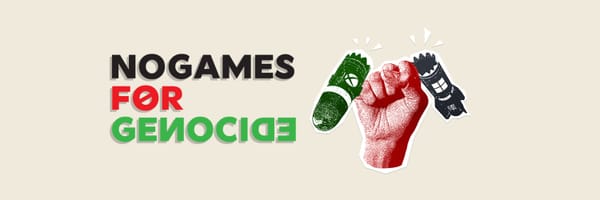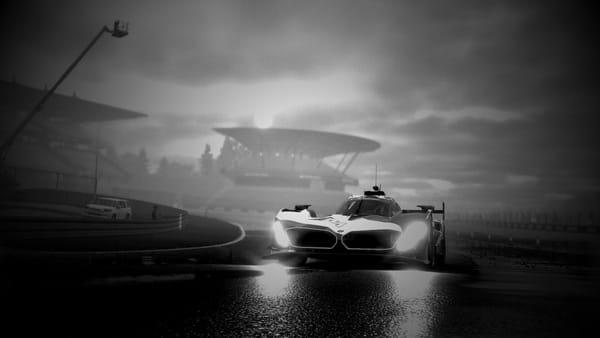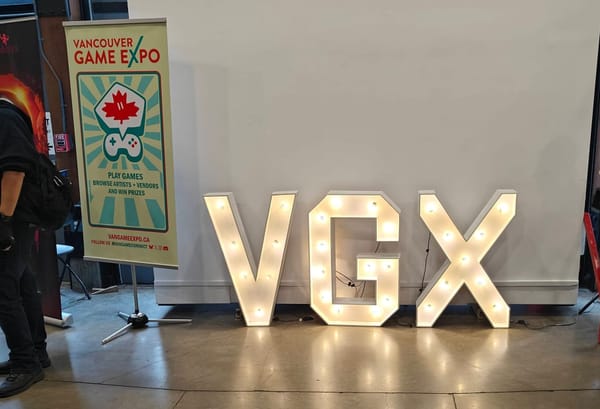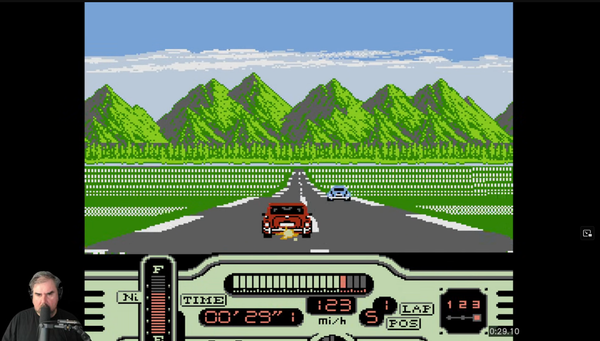There's a Need For Speed Carbon Arcade Cabinet?
At it's core, it is still Need For speed Carbon and it fulfills one of the basic principals for a console racing game to nail in the port to the arcades: the base game should be good in the first place.
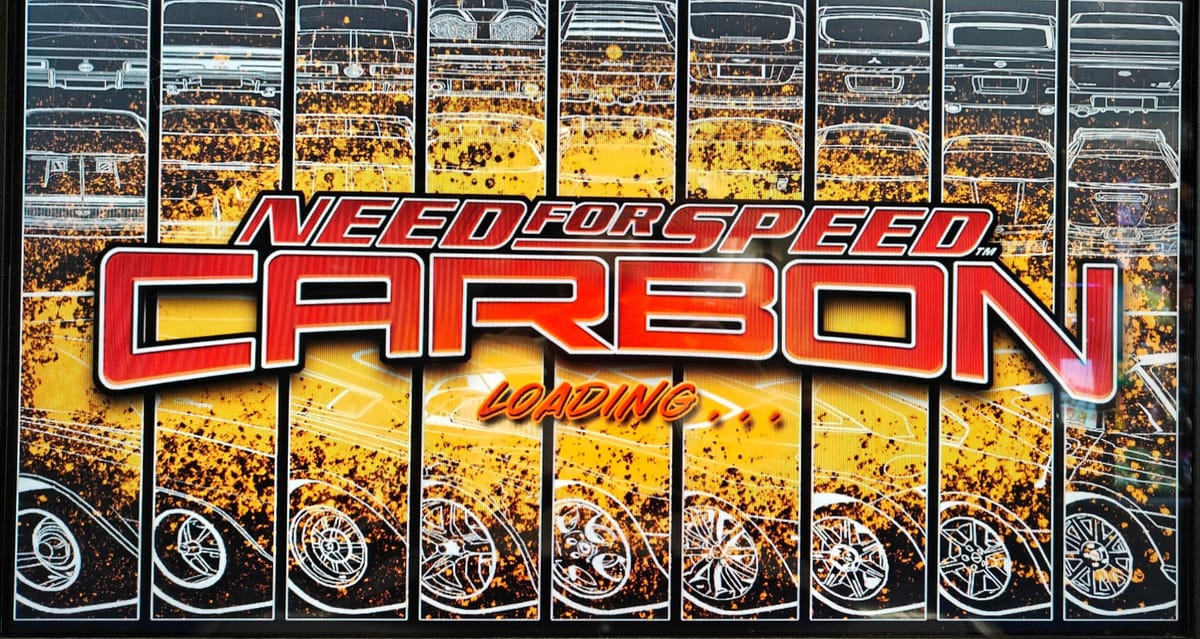
In the very early 2000s, it was said that the arcade died in The West. The technological convergence that had happened between what was possible at home and in a sit-down or stand-up cabinet had been fully achieved. Not too long before, as gaming was entering the third dimension, it took SEGA to partner with General Electric and Lockheed Martin to make 3d-textured graphics with a rock solid framerate a reality for the first SEGA Rally Championship. With technology or parlor tricks no longer good enough a reason for people to push quarters, home consoles began to take over as the experiences possible in the home now fully exceeded what was possible at the time in the humble arcade and slowly, dedicated arcades started to fall by the wayside across North America. Included in that was the arcade most local to me, Cyber City Adventure, closing at the end of 2011 with it now the home of a Mcdonalds and a few other commercial businesses.
It took around fifteen years for arcades to start to make a resurgence in North America. Fueled by nostalgia and a renewed realization that arcades were always a good hangout location, after the easing of restrictions that were put in place in lieu of the ongoing COVID-19 pandemic, contemporary arcades and barcades have come back into the consciousness after cabinet machines were largely left in the back corners of malls and movie theaters in North America. And while some mall arcades have done the due diligence of modernizing their cabinet list to the latest and greatest of what's available to keep the quarters and loonies rolling in, not all establishments have caught up with the times and kept pace with the newest titles that are being made. Chief among this failure to adapt to the resurgence of the arcades isn't a arcade in a mall or a movie theater: it's on ferry boats that cross the Salish Sea every day.
The main way for people to go from Vancouver Island to the mainland and back again is by the humble BC Ferry. Created in 1960 after it became clear that a government-owned ferry service in coastal British Columbia was a necessity, they started to take over operations from private corporations such as the Black Ball Line and became the largest ferry passenger service on the continent. On the main vessels that make the trip between Vancouver that stops in either Nanaimo or Victoria, there have been arcades on these vessels going back to the 1970s with a few cabinets against a corner wall in one of the main passenger areas. As new and upgraded ships were added to the fleet, the presence of arcades on these ships would grow to where they have their own room on the main passenger deck, now known as the Video Zone.

Their relevance as an ideal way to kill time on this two hour trek across the Salish Sea would remain constant through to the 2000s. Fortunes would change through the 2010s with the more widespread adoption of smartphones and tablets among ferry-goers meaning they had an additional primary way to pass the time, and one that didn't require having change on hand or using a five dollar bill to get some change on the vessel. This would be compounded as the service went into the 2010s as the years of constant use and lack of proper upkeep by BC Ferries or arcade supplier Ryan Vending meant that cabinets, and change machines themselves, were becoming inoperable. The service then announced in 2016 that paired with the continuing plans to upgrade and amalgamate the major fleet, that the arcades would be removed from BC Ferry vessels. However, some ships still have the Video Zone even as others have the spot where the arcades would be blocked away by a newly-added wall to give the appearance there was nothing there in a previous life. This brings us to my trip to Kamloops this last weekend, and a pair of sailings on the MV Coastal Renaissance.
The MV Coastal Renaissance still has a Video Zone, and it's where I had made a discovery that I previously didn't know was a thing: Need For Speed Carbon was ported to the arcades. The arcade release came in 2008 and was the third and final Need For Speed arcade title released by Global VR, after they previously ported Underground and Hot Pursuit 2 to the arcades. The two cabinets on the MV Coastal Renaissance were the contemporary yellow, with the red and black dragon graphics on the side design with the cabinet chassis sharing much of it's framework with the San Francisco Rush 2049 cabinets from the late 90s. Some cabinets came with additional fiberglass siding to give the appearance of a side body panel of a car and to better show off the graphics. Only one was operational, as the other cabinet was having memory issues as well as missing the main display bezel above the monitor. The operational cabinet was not without faults either, as the 6-speed manual gear shifter only had first, second, and sixth functioning which meant it was more ideal to just use the automatic transmission option.
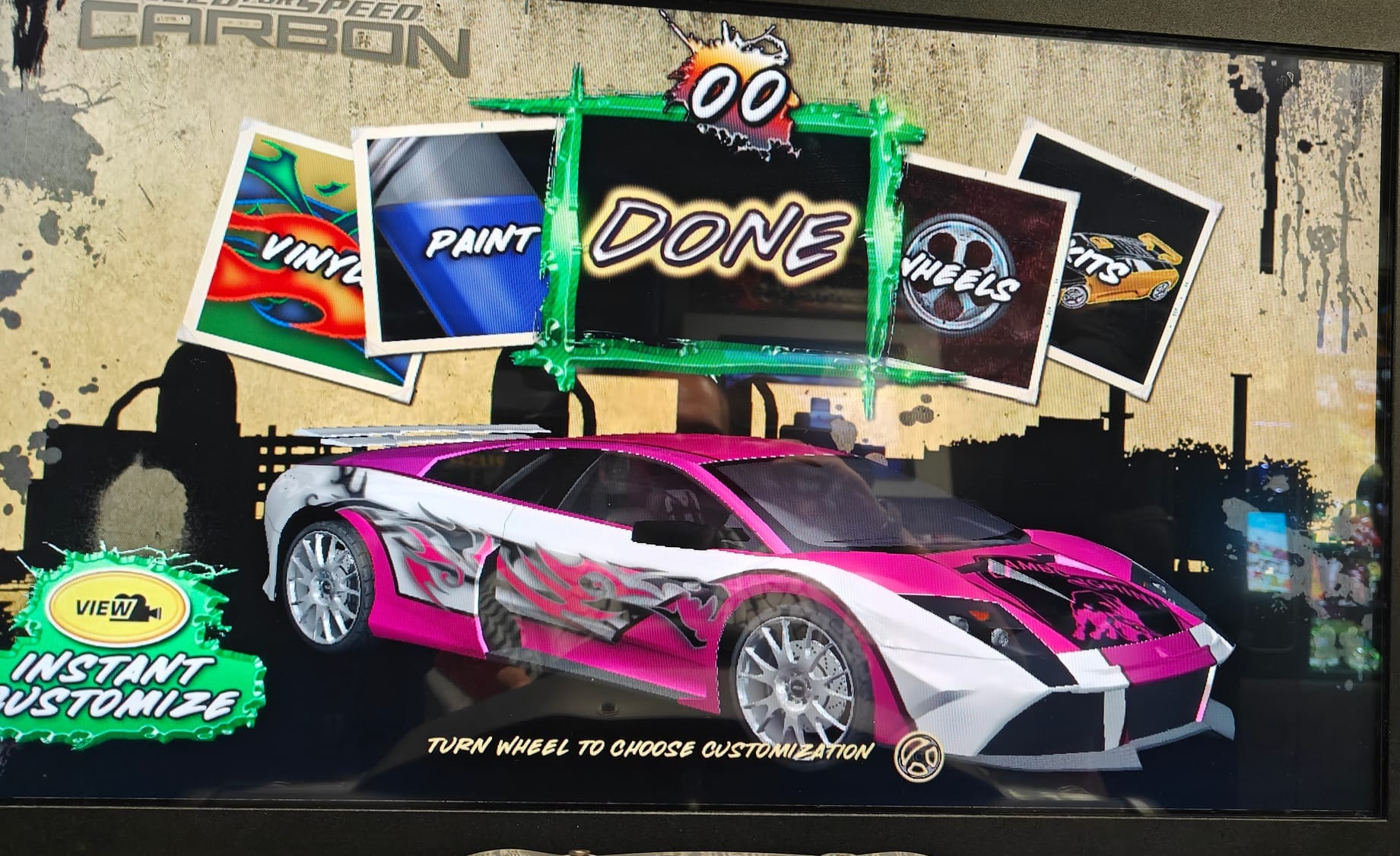
That inability to use third, fourth, or fifth gear would hamper my first race on the functioning cabinet, before using the automatic transmission option for the three following races I would do on my trip to and from Vancouver Island. While it is common for arcade cabinet racers to give the manual transmission option an advantage, such as a higher top speed in Daytona USA, such an advantage isn't in Need For Speed Carbon and any potential difference in performance between the options would be negligible for the user with the auto-recharging nitrous boost at one's disposal. The driving dynamics have not been changed with the move to the arcades, with the only adjustment made being that there isn't different handling dynamics between the three car styles which helped to define the home console version. All cars now drive in the neutral style of the exotics, a decision for the best to make sure the experience is universally enjoyable paired with no performance modifications being possible, with this being crucial for the muscle cars in the home version. You do, however, get the chance to change the visual appearance of the car you choose with preset wheels, vinyls, paint and body kits all on offer to make the car you race your own.
At it's core, it is still Need For speed Carbon and it fulfills one of the basic principals for a console racing game to nail in the port to the arcades: the base game should be good in the first place. It is still a Need For Speed from the era where Black Box Studios was firing on all cylinders in the midst of Need For Speed's golden age. This is how a racing game that isn't trying to replicate real driving and racing but still wants to be in the rational style should drive. Palmont still remains an incredibly well designed free-roaming city for racing, paired with the AI having improved leaps and bounds from the initial logic the opponents had in Underground 2. There is no police beyond boss races in the career challenge mode, there is no canyon driving, and there is only one drift event you can do, but this is still as pure and as crisp of a driving and racing experience that drives better than any of the Need For Speeds that would follow it, Pro Street and World notwithstanding.

That removal of police pursuits from the races is the only issue I really have with the port itself, as having that passive interaction with the cops would have been a fun eye-catching addition to help it stand out more from it's predecessor in Underground or the Cruis'n titles which remain prevalent in North American arcades. At the same time, such an addition would have given it something to let it fully hold it's own compared to the arcade cabinet offerings made by SEGA and Bandai Namco with their Initial D Arcade State and Wangan Midnight Maximum Tune series respectively. Those two series represent the gold standard for what a arcade cabinet racing game should be: going the extra mile in giving the player a reason to keep putting coins into the machine beyond the racing experience itself with their narrative-driven stories and ability to save your progress and upgraded cars using account cards. The three Need For Speed arcade ports and the more recent Cruis'n titles feel like cabinet racers from before the music stopped for the arcades in the early 2000s; before the realization was made that developers needed to bring more to the table to get people to push quarters into the machines beyond the nature of a game being there at all.
Which brings us back to the Video Zone. There is still an avenue in which an arcade can be a viable offering fiscally on a BC Ferries vessel, but it requires an active effort to give people arcade games they want to play and make sure they are all running reliably. The most modern arcade game on the MV Coastal Renaissance was Need For Speed Carbon, which saw it's arcade port released in 2008. Arcades in the region, including mall arcades at Tsawwassen Mills and Metropolis at Metrotown, have done a fantastic job of bringing back the arcade to the region with modern offerings paired with those focusing on retro classics and pinball such as the brilliant Quazar's Arcade in Victoria. Left behind in all this is the most humble of arcade, the one most people in the lower corner of British Columbia will be most exposed to after having their BC Burger meal and a beer from the Coastal Cafe.
And for as much as I love discovering that there's a Need For Speed Carbon arcade cabinet with which I put a top time on one of it's leaderboards, the fortunes of the BC Ferries Video Zone would change in an instant if it was Pac-Man Battle Royale Chompionship and Wangan Midnight Maximum Tune 6rr on offer instead of San Francisco Rush 2049 and Tekken 5: Dark Resurrection.
If this does happen, can I be first in line to buy a Rush 2049 or a Daytona USA 2: Battle on The Edge cabinet please?


